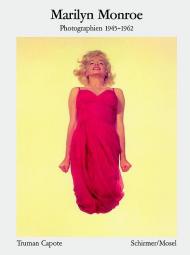Freikörperkultur. An evocative new series from Mario Testino
Mario Testino’s Undressed removes various layers. Coinciding with an exhibition conceived exclusively for the Helmut Newton Foundation in Berlin, this intimate series explores the notion of undressing in photography as much as it lays Testino’s archive bare, probing beyond the photographer’s established public image to reveal a deeper understanding of his practice and oeuvre.
The 50 featured photographs center on the naked body, alternately exploring and pushing the traditions and boundaries between sex, gender identity, and fashion. Honoring the influence of Helmut Newton, the images become abstracted body landscapes, the protagonists appearing as mere form, a torso, even a statue.
A special highlight are previously unseen photographs shot in the Testino studio, in which an exuberant atmosphere intermingles with the implicit frisson of nudity and where playfully amorous dynamics never slip into the obscene or pornographic.
Testino’s lineup ranges from supermodel protagonists, such as Kate Moss and Amber Valletta, to anonymous, androgynous men; from individual portraits to group photos. We see many intimate moments, some caught candidly, some consciously orchestrated, such as a young man shaving a woman’s upper pubic hair in a luxurious bathroom. Following in the tradition of SIR, many of the images may be seen to redefine masculine paradigms in the same way that Newton created his own brand of female beauty.
As emotions, aesthetics, and bodies meet, Testino grants new insight into his world-famous work. The images are accompanied by an introduction from curator Matthias Harder, a candid conversation piece with Carine Roitfeld, as well as an essay from psychiatrist and psychologist Manfred Spitzer who offers a neuroscientific perspective on our visual perception of bodies and beauty.
About the Author:
With a four decades career as a leader in the fields of fashion, culture and lifestyle, Peruvian-born Mario Testino OBE has many facets that take him beyond the surface of a photographer and artist placing him as a cultural visionary. Testino’s universe is broad, his impact is uniquely powerful and his lifestyle is completely authentic. Testino’s has seen his works published and exhibited in hundreds of cities around the world. Throughout his career he built unprecedent relationships with editorial and commercial partners such as Vogue, Burberry, and Gucci to name a few. His past and present muses include HRH Princess Diana, Madonna, Donatella Versace, Kendall Jenner and Mariacarla Boscono. His solo exhibitions have shown in museums and galleries worldwide, including the National Portrait Gallery, London; and the Museum of Fine Arts, Boston.














